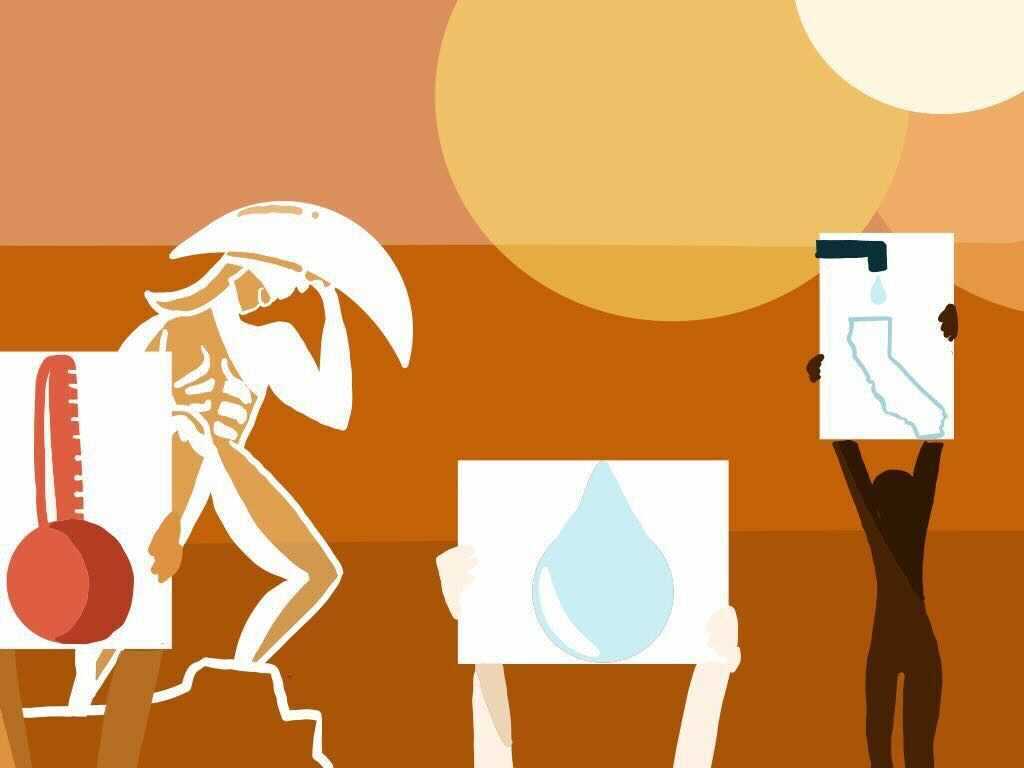University implements water conservation resources

On Aug. 16, the Metropolitan Water District of Southern California declared the first-ever water shortage from the Colorado River. The declaration emphasizes the drought the Southern California region has been experiencing for years, and residents of the region are being asked to voluntarily reduce their water consumption.
In response to the water shortage declaration, USC Facilities Planning and Management intends to continue “USC’s already rigorous water conservation efforts such as sub-meters, low-flow water fixtures and more efficient irrigation systems,” Chief Sustainability Officer Mick Dalrymple said in a statement to the Daily Trojan.
The water level at Lake Mead, the Colorado River’s largest reservoir that supplies water to about 25 million people, was at about 35% capacity Aug. 17.
“The amount of water that naturally would flow in the Colorado River has been going down but, by itself, [is] not necessarily an issue,” said Jill Sohm, associate professor of environmental studies. “What has been happening is that the demand and the usage of water on the Colorado [River] has been going up at the same time.”
Droughts can occur when a region receives less rainfall than normal. With insufficient precipitation to replenish reservoirs and higher water consumption, water conservation is becoming increasingly important as sources of water become more limited. As rainfall varies from year to year, Western states are in and out of a never-ending drought. Some years, there is enough water to rebuild reservoirs, and in others, there is so little that reservoir usage is reduced.
Western states have many plentiful agricultural zones due to ample sunlight. However, they lack the necessary water to support their crop growth.
“41 water sub-meters have been installed at the University Park Campus to provide real-time, detailed usage data that helps FPM to detect leaks and make more immediate, better decisions about water management,” Dalrymple said in the statement. “This fiscal year, FPM is targeting an additional 30 locations for water sub-meters.”
Low-flow water fixtures such as showerheads and faucet aerators have been installed into residential housing, “which use 25% less water than their regular-flow counterparts,” Dalrymple said.
Additionally, 1,680 faucets in 126 non-housing buildings now have touchless low-flow fixtures installed following FPM’s work toward the Universitywide replacement initiative for more sustainable equipment. The Keck Hospital Water Fixture program has installed almost 2,000 water flow restrictors for hospital sinks, showerheads and dialysis machines.
The initiative reduced drinking water usage by 10% since 2014. However, it does fall short of the 2020 Sustainability Plan, where one goal was to decrease potable water use by 25%. The Office of Sustainability is currently collaborating with other USC departments to form a Sustainability Plan for 2028.
Despite functional changes to implement more sustainable equipment, many students and staff also believe changes should happen on an individual level too. If everyone in the United States reduced their average shower time by merely one minute, 165 billion gallons of water would be conserved.
“I know USC is pretty retrofitted as far as showerheads that are very low flow and toilets that are low water use, but I think encouraging students to be mindful of their water use is also important,” said Dominic Borrelli, a sophomore majoring in environmental studies.
Sohm and Borrelli both mentioned signage near showers as a way to remind students to use less water. Dalrymple suggested other ways of practicing water conservation strategies too, such as washing full cold-water laundry loads, using the dishwasher instead of hand-washing dishes and reporting leaky water fixtures to USC Housing.
Borrelli said education about the impacts of drought would also help others understand that droughts affect more than a lack of water in households.
“I think we’re always told, ‘OK, just shower less,’ and ‘Maybe do this and this and retrofit this,’ but [I wish students knew] what that actually translates to,” Borrelli said.
By understanding the extent of droughts, individuals can be more aware about the effects of their water usage. Borrelli said that he wishes the University would provide more resources, such as an email to students or information sheets about water consumption, for students to learn about the drought and the effects of their water usage.
“As students in Los Angeles, we all have an obligation to at least make some changes to make sure we’re not overusing resources,” Borrelli said. “I know that’s perhaps a task that’s quite big for the University to take on and I get it, but I would just like to see more information for people who otherwise would have no idea that California is in a drought right now.”
However, nearly two-thirds of all water consumption is due to corporate consumption.
“What I want to stress is that at the same time of each person making their own contribution and empowering themselves to do something, we need to hold municipalities [and] corporations responsible for doing their part,” Sohm said. “[Corporations] are so much larger than any one individual and have, as a whole, so much impact that we should not forget about the role that they play in these types of resource issues.”

